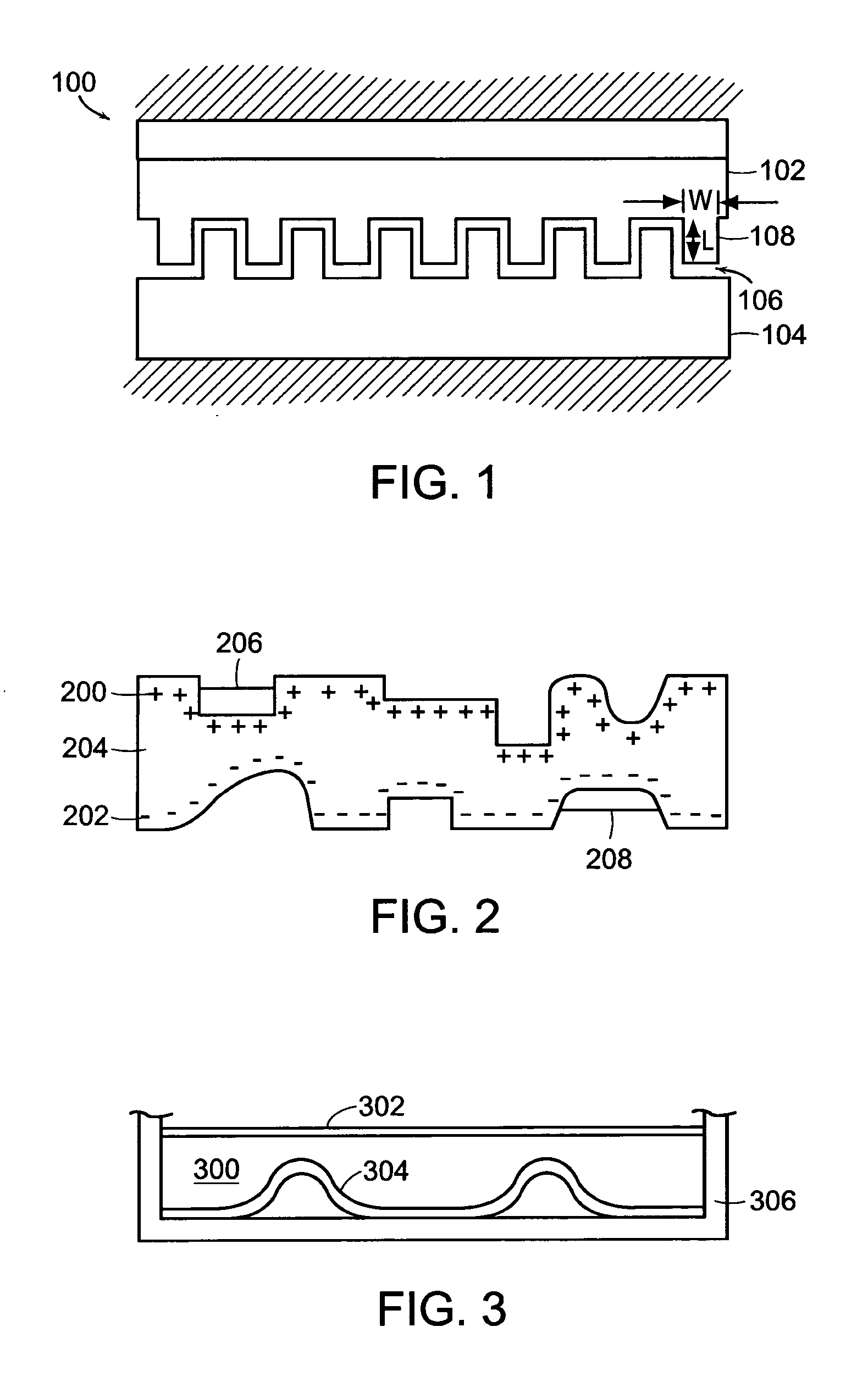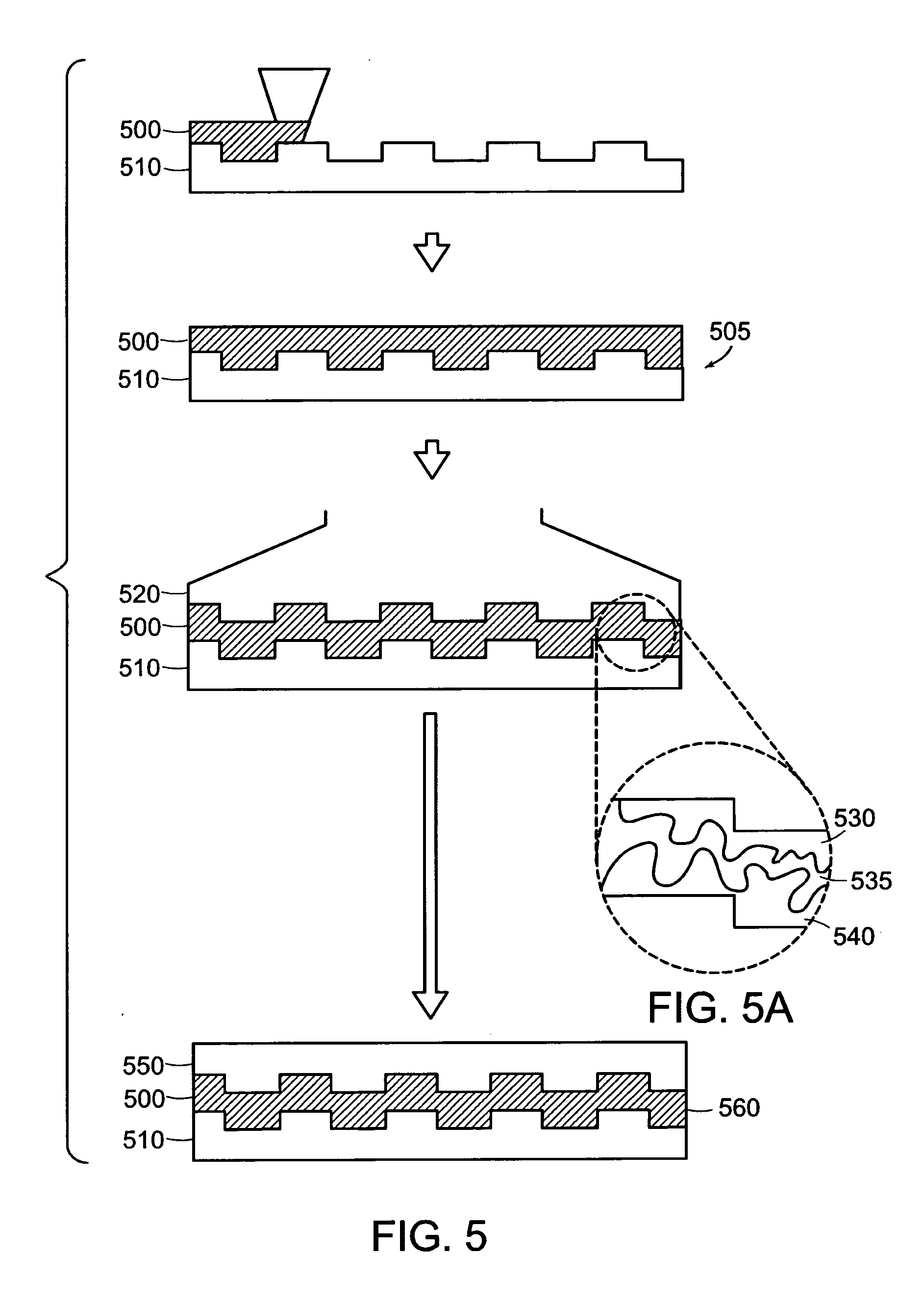Bipolar articles and related methods
a technology of bipolar batteries and articles, applied in the field of bipolar articles, can solve the problems of limiting the available shapes or form factors of these batteries, and the energy density of these currently available batteries is relatively low, and achieves the effects of short diffusion distance, poor volumetric utilization of space, and low energy density of these currently available batteries
- Summary
- Abstract
- Description
- Claims
- Application Information
AI Technical Summary
Benefits of technology
Problems solved by technology
Method used
Image
Examples
example 1
A thick symmetric electrochemical cell with interpenetrating electrodes is provided, with multiple current collectors wired in parallel distributed throughout the thickness of the battery. The current collectors are configured in parallel by embedding them so that the cathode collector only connects to the cathode network and the anode collector only connects to the anode network. The approximate spacing between current collectors and the number of layers in the cell are chosen by balancing design parameters as discussed in detail above with respect to Equations 1-3. The interpenetrating current collector structure allows for a cell that provides similar rate capability with significantly fewer layers, and thus reduced current collector volume, compared to a standard cell, and significantly improved rate capability and life cycle compared to a three-dimensional battery with only a single set of current collectors. The interpenetrating current collectors overcome the inherent shortc...
example 2
A self-organizing bipolar system, suitable for use in making articles having interpenetrating current collectors and / or arbitrary form factors as described in Examples 3-8 below, is made using the components listed in Table 3.
TABLE 3Cathode Current CollectorAlCathode CC Coating10% PEDT-PSS (30 nm) with 90% PTFEpowderCathodeLMCO (3% MgO) (density ˜5 g / cc)Encapsulant10% PEDT-PSS (30 nm) with 90% PTFEpowderAnode6 μm MCMB (density 2.1 g / cc)Anode Current CollectorCuElectrolytePEO + LiClO4Solventdiiodomethane (DIM) + acetonitrile (AN)
Coated Cathode Current Collector
Aluminum (Al) disks are coated with a conductive polymer blend of poly(3,4-ethylenedioxythiophene)poly(styrenesulfonate) (PEDT-PSS) and polytetrafluoroethylene (PTFE) to function as the cathode current collector. This coating has a refractive index that renders it attractive to the cathode material, lithium magnesium cobaltate (LMCO), and repulsive to the anode material, mesocarbon microbeads (MCMB).
The coating solution...
example 3
A high surface area interface battery is made using a self-organizing mixture as described in Example 2. The heated self-organizing slurry is fed into a hopper of a stencil printer. Individual battery sections are printed into stencils to provide a final battery stack that is 32 mm wide×48 mm long, with a thickness of 0.1 mm. The slurry is cast on a PEDT-PSS / PTFE-coated cathode collector as described in Example 2. An open mesh anode current collector is placed on top of the stencil. After vacuum curing, the energy density of the resulting symmetric cell about 600 Wh / l. 23 sections are stacked with a thin mylar layer placed between each one, providing a total battery thickness of 2.4 mm. The energy density of the resulting symmetric cell is about 575 Wh / l.
In another experiment, 14 individual sections are stacked with alternating sections flipped, such that the cathode and anode current collectors of adjacent sections are in contact with each other and the total battery thickness i...
PUM
| Property | Measurement | Unit |
|---|---|---|
| Length | aaaaa | aaaaa |
| Length | aaaaa | aaaaa |
| Length | aaaaa | aaaaa |
Abstract
Description
Claims
Application Information
 Login to View More
Login to View More - R&D
- Intellectual Property
- Life Sciences
- Materials
- Tech Scout
- Unparalleled Data Quality
- Higher Quality Content
- 60% Fewer Hallucinations
Browse by: Latest US Patents, China's latest patents, Technical Efficacy Thesaurus, Application Domain, Technology Topic, Popular Technical Reports.
© 2025 PatSnap. All rights reserved.Legal|Privacy policy|Modern Slavery Act Transparency Statement|Sitemap|About US| Contact US: help@patsnap.com



